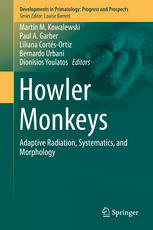

Most ebook files are in PDF format, so you can easily read them using various software such as Foxit Reader or directly on the Google Chrome browser.
Some ebook files are released by publishers in other formats such as .awz, .mobi, .epub, .fb2, etc. You may need to install specific software to read these formats on mobile/PC, such as Calibre.
Please read the tutorial at this link: https://ebookbell.com/faq
We offer FREE conversion to the popular formats you request; however, this may take some time. Therefore, right after payment, please email us, and we will try to provide the service as quickly as possible.
For some exceptional file formats or broken links (if any), please refrain from opening any disputes. Instead, email us first, and we will try to assist within a maximum of 6 hours.
EbookBell Team

0.0
0 reviewsHowler monkeys (genus Alouatta) comprise 12 species of leaf-eating New World monkeys that range from southern Mexico through northern Argentina. This genus is the most widespread of any New World primate and can be found to inhabit a range of forest types from undisturbed rainforest to severely anthropogenically-impacted forest fragments. Although there have been many studies on individual species of howler monkeys, this book is the first comprehensive volume that places information on howler behavior and biology within a theoretical framework of ecological and social adaptability. This is the first of two companion volumes devoted to the genus Alouatta.
This volume:
· Provides new and original empirical and theoretical research on howler monkeys
· Presents evolutionary and adaptive explanations for the ecological success of howler monkeys
· Examines howler behavior and ecology within a comparative framework
These goals are achieved in a collection of chapters written by a distinguished group of scientists on the evolutionary history, paleontology, taxonomy, genetics, morphology, physiology, and anatomy of howlers. The volume also contains chapters on howlers as vectors of infectious diseases, ethnoprimatology, and conservation.